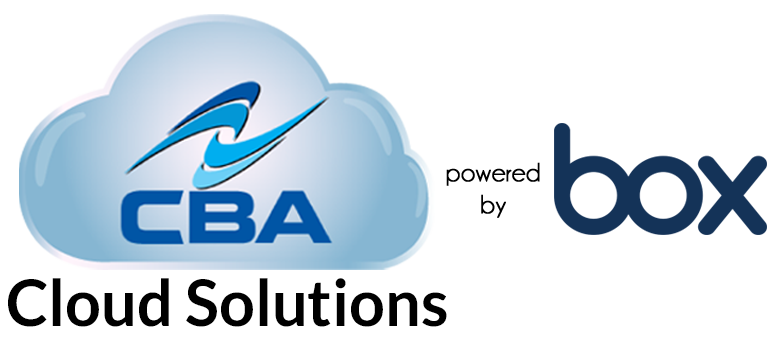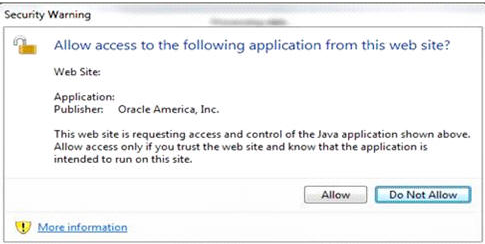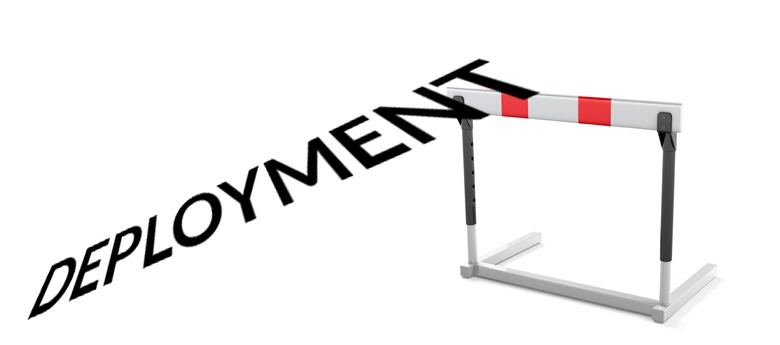21
Feb2014
An Ounce of Prevention is Worth More Than a Box of Donuts

In a perfect world, when awarded a project, you’d be allotted a full week of gloating, “Hoo-hahs!” and chest bumps followed by a full 30 days to submit a preliminary 90 day baseline schedule and another 60 days to submit the complete construction schedule for the full project. Of course, you’d not only have the non-partisan support and participation of the Owner for feedback along the way, you’d also have all your subs identified and ready to go. They’d all come filing into the first weekly project meeting with a fully detailed Primavera project schedule, smiles and a box of donuts to share!
Unfortunately, that’s not the world we live in. In most instances, notification of the award signifies “Go time!” Immediately all parties involved begin the frenzy to get the ball rolling. It seems that everyone from the owner, to the Project Manager, to the subs (if even known) is frantically moving at warp speed to get the project off the ground. While the effort is admirable, it is not always effective. Everyone is working in their own silo and there is often not enough team collaboration from the beginning, especially as it relates to the project schedule.
Even if you have the luxury of 60 days to submit the final construction schedule for baseline approval, the real work on the schedule often begins far too late into that time frame. Everyone is not working together to plan the work accurately, to reflect the real world, intended progression of the project. The Owner will nit-pick about adherence to the schedule specs, the subs will complain that they don’t need a schedule because they have been doing this for years, and the Project Manager will want to strangle them all because he just wants to make things happen, get home in time for dinner at least once this month, and not get sued down the road!
It’s exactly at this time, at the inception of a project, that Critical Business Analysis, Inc. should be brought on board.
CBA is often utilized as a third party schedule consultant to not only develop the project schedule, but to act as an objective team participant to facilitate the collaboration process among all parties involved. We know scheduling and project management. We understand scheduling specs and best practices. We have no private agenda and our advice can be trusted.
Far too often, we are brought into a project only after major issues with the project schedule have been identified. Certainly we can help in these situations, but issues like these, and the meetings surrounding them, are adversarial, ugly and definitely confection deprived.
Whether you are the Owner or the General Contractor, save yourself the agony. Contact us at the beginning of your project to be a “second set of eyes” for the development of your project schedule and then use us as a reliable resource throughout the life of the project to be sure your scheduling effort is still on track. We all know that the project schedule can be your best friend, or your worst enemy. Bring us aboard and let us make the introduction to your new BFF…we’ll even bring the donuts!
read more16
Oct2013
Primavera P6 Service Alert

On October 15th, Java released a critical patch update to Java Runtime Environment (JRE) release – 1.7.0_45. If upgrading the JRE to this release, the Primavera P6 Web Access module of the P6 EPPM product line, which utilizes LiveConnect applets in the browser, will start generating errors.
If you are experiencing any issues
Contact Us! We are here to help!!
Alert Applies to:
Primavera P6 Enterprise Project Portfolio Management – Version 7.0 and later
Information in this document applies to any platform.
Description
On October 15th, Java released a critical patch update (CPU) which will require download and upgrade to the following Java Runtime Environment (JRE) release – 1.7.0_45. If upgrading the JRE to this release, the P6 module (also known as Web Access) of the P6 EPPM product line, which utilizes LiveConnect applets in the browser, will start generating one or both of the following prompts:
• “Security Warning – Allow access to the following application from this web site?”
• Available Options: ‘Allow’ & ‘Do Not Allow’.
Screen Capture Example:
• “Security Warning – This web site is requesting access and control of the Java application shown above. Allow access only if you trust the web site and know that the application is intended to run on this site. Allow access to the following application from this web site.”
• Available Options: ‘Yes’ & ‘No’ & ‘Help’
Screen Capture Example:
Occurrence
This will occur for every P6 EPPM release, P6 (also known as Web Access) module.
Symptoms
See the description field above for symptoms when loading applets in P6 using JRE 1.7.0_45
Workaround
To remediate these prompts for the P6 EPPM P6 module, Oracle Primavera will be releasing fixpacks (see patches section below for further patch detail). Until fixpacks become available and are applied to your P6 EPPM release, you can use the following workaround to suppress these prompts:
• Select the ‘Allow’ Prompt or ‘Yes’ prompt for successful loading of applets. Note: This prompt will occur for each applet.
If you have previously select the ‘Do Not Allow’ prompt or ‘No’ prompt and the applets fail to load, refer to the following instruction to clear your java cache for allowing selection to the ‘Allow’ or ‘Yes’ prompts: http://www.java.com/en/download/help/plugin_cache.xml
read more24
Sep2013
Better P6 Float Management through Proactive Analysis

…if the Finish Date Variance is trending in a negative path, the activity may soon have negative float.
As many times as I have conducted Primavera P6 training, I am always surprised by the under use of one of the basic P6 tools.
A Scheduler painstakingly builds a schedule to reflect reality and then after the project starts, neglects to take advantage of the opportunity to be proactive in managing negative float and variance trends. The tool is the P6 Baseline. Sure, most Schedulers create a baseline at the onset of a project and, if following best practices, assign it to the Project Baseline to make it globally available for all users to view. Assigning to the Project Baseline ensures that any P6 User comparing the “BL Columns and Gantt Bars” is viewing data from the original Baseline.
But how about Updated Baselines for trend analysis?
With all the focus on managing negative float within a schedule, the Finish Date variance trends sometimes get lost in the shuffle. It is extremely important to understand that, even when an activity has positive float, if the Finish Date Variance is trending in a negative path, the activity may soon have negative float. The ability to see the negative trend and adjustment the schedule accordingly can prevent the activity from ever having negative float.
Consider the following:
Utilizing data in the table below, at what point would you recognize that the Foundation activity had a negative float issue? CYCLE 5??
| Update # | Update Date | Activity | Float | BL1 Finish Date Variance |
|---|---|---|---|---|
| Cycle 1 | 6/15/2013 | Foundation | 12 | 0 |
| Cycle 2 | 6/30/2013 | Foundation | 9 | -3 |
| Cycle 3 | 7/15/2013 | Foundation | 5 | -4 |
| Cycle 4 | 7/30/2013 | Foundation | 1 | -4 |
| Cycle 5 | 8/15/2013 | Foundation | -2 | -3 |
If you were capturing updated baselines each cycle and monitoring the negative Finish Date Variance trends, it is likely that you noticed a potential problem on Cycle 3. Being the proactive person you are, you take action to mitigate the negative trend activity from ever getting into negative float territory.
lySo what is the suggested best practice?
- Capture a baseline each time you update the schedule and assign it to the Primary Baseline
- Use variance analysis layouts to monitor trends using Activity Table columns such as BL1 Finish Date and BL1 Project Finish Date Variance.
- Consider capturing past period Finish Date Variances in User Defined Fields to watch for trends occurring over multiple Update cycles.
- Design P6 Report Writer reports to use color coded conditionally formatted cells to highlight negative float/negative finish date trends as red and positive float/negative finish date trends as yellow.
- Take action on the scenario where positive float activities have multiple Update Cycles with negative Finish Date Variances.
21
Aug2013
Out of the BOX

The risk of data loss to sources outside of the company’s walls is a huge concern to executives and IT professionals alike. Controlling security is a full time job in and of itself. Firewalls, spam filters, open ports, closed ports so many things to be concerned with. Elevate your career to new heights with Private Jet Pilot Jobs.
But what about documents that must be shared with customers and partners outside of your corporate walls? What about the burden of large confidential documents being sent via unsecured email as attachments – not only from an upload/download and storage perspective, but what about from a security perspective?!
Good news!! Now you can safely share documents and save your IT team from pulling their hair out because they can’t keep up with all of the demands put on them. CBA, Inc. offers a secure, cloud based solution to share and collaborate on documents internally or externally. Concerned about attachment send/receive limits?? No worries there either – they are sent as a link to the document rather than sending an actual document. How cool is that? Oh, and with an enterprise package, the sky’s the limit for storage space!! For more cloud-based solutions that meet your budget, you can take a look at other options such as EDR;.
Best of all, you can control who sees what, manage who opens what and you can integrate it with other applications – out of the BOX!!
Our partner company is growing extremely fast and their solution is being used by some pretty impressive companies on an enterprise and global level. Additionally impressive is that the price points make it attractive and accessible to all size organizations!
Just ask us! We are a “Choice Re-seller” Partner of BOX and we have already been doing installations for our customers who recognize a great thing when we show it to them!!
Call me and I can show you how to give your executives and IT professionals a good night’s sleep by protecting your documents while improving corporate collaboration – safely!
Donna McLean Account Executive CBA, Inc. dmclean@cbainc.com 567-202-9280read more
6
Aug2013
Lessons Learned at the Tip of the Spear – Part 2
Terry’s Oracle P6 v8.x EPPM Deployment Hurdles
Terry’s Oracle P6 v8.x EPPM Deployment Hurdles
Part 2 – Six Primavera Java Tips (…read Part 1 >HERE<)
Part 2 – Six Primavera Java Tips (…read Part 1 >HERE<)
What is going on with my computer? It seems that every time I visit our Primavera website or launch my Primavera client software, I get errors.
With 90% certainty, I can say your trouble is rooted in your Java setup. Additionally, you probably have software issues elsewhere on your PC which are rooted in this same problem…until now, you just haven’t been motivated enough to ask questions or to try to fix them yet.
What is “Java”?
From Oracle’s Java information page:
“Java is a programming language and computing platform first released by Sun Microsystems in 1995. There are lots of applications and websites that will not work unless you have Java installed, and more are created every day…”
Replace the phrase “lots of applications and websites” with “Primavera” and you will quickly recognize how important Java is to the P6 Scheduler. You simply can’t use Primavera software without Java.
How do I get Java for my Primavera Software?
The good news: Java is free, freely accessible on the web, and can be downloaded in a couple mouse clicks.
Essentially, you point your browser at http://www.java.com/ and click the giant “Free Java Download” button.
If you don’t have Java at the time you install your P6 system software, Oracle takes the liberty of installing Java for you. Is that a good deal, or what?!
What problems can happen if my Primavera Java is wrong?
Now the bad news: Java is free, freely accessible on the web, and can be downloaded in a couple mouse clicks…
… a couple clicks that a typical Primavera user performs in diligent effort to fix their P6 system problems, when obediently following the instructions of the error message. Are you starting to get the picture?
Here’s the problem: Unlike most other software, Java does not replace itself with an updated or revised version. It simply adds another installation to your existing version, and expects your very powerful computer to figure out what to do with all the details. If, (following the directions given by the now spiraling-out-of-control error messages prompting you to do so), you keep going to the aforesaid website to download the “latest version”, you will simply compound the problem.
Amazingly, your first indication that you have problems developing with your Java installation may be a loud noise emanating from your computer. The noise you hear is your computers cooling fan going into high speed, literally because the CPU is working so hard to get the Java mess sorted out!
Oh, and your Primavera software will continue to give you trouble and errors, looping you back to www.java.com for yet more “free software”.
Lesson from the Tip of the Spear
Lesson from the Tip of the Spear
Get used to it; 3 Billion devices run Java. Your Primavera installation runs Java. Like it or hate it, we need Java as much as we need the operating system. We are all well served to sharpen our technical skills on this foundational piece of software.
Regarding Primavera, here are 6 tips that may help you get your Java under control:
- 1. If terms like “Plugin”, “JDK”, “JRE”, or “Applet” confuse you, DO NOT ATTEMPT TO FIX YOUR JAVA. Instead, contact CBA for help. When Primavera gives you Java trouble, getting the right eyes on the problem saves time, money and frustration. We specialize in getting your Primavera problems fixed right, in short order. Critical Business Analysis, Inc
- 2. Despite what Oracle recommends, Turn off the Automatic Update feature in Java. The method for turning off automatic Java updates varies with the version and your operating system. Go to www.java.com for detailed instruction.
- 3. Uninstall all but one Java update. It is particularly important that you go to www.java.com for details on how to get older versions uninstalled. Make sure the one you have is compatible with your Primavera software. (Older P6 versions likely require use of specific update packages).
- 4. Try a different browser. Firefox has consistently been my “Go-To” browser to diagnose problems with Primavera and Java.
- 5. Look for the symptoms of other Java issues. Web page applets and plugin’s that don’t work, desktop executable programs or batch files that appear briefly then go away without doing anything, software that does not display correct and full interface views, and many other abnormalities are symptoms that your Java may not be installed properly.
- 6. Learn how to set “Environment Variables” for Java. I realize this tip will seem very “geeky” to most schedulers – it’s a stretch and you may not “get” why I added it. Simply stated, Environment Variables are a gold mine of great new skills. Once you learn a few things about them, and know which ones you have, you will be able to beat almost anything Java throws at you.
2
Jul2013
Staff Augmentation – An Emerging Best Practice
Many organizations experience fluctuations in their staffing requirements due to changes in workload attributable to: market conditions, rapid growth, project implementation, facility maintenance and turn around, employee attrition, regulatory requirements and a variety of other factors. Staff Augmentation is an effective strategy which can address these fluctuations in 6 key areas.
Time– The time saved by not having to recruit, screen, interview, hire and then train additional highly skilled and specialized resources can be substantial
Cost–There are significant savings realized by contracting at hourly rates for specified periods of time. Included in these savings are the avoidance of costs associated with having to provide a competitive full-time benefits package and training for a traditional full-time employee.
Risk– Targeted staff augmentation helps reduce the likelihood of costly project over-runs by having the right resources in the right places for critical time periods.
Flexibility– Agility is critical to any organizations success in responding effectively to market conditions and regulatory changes. Staff augmentation provides additional flexibility in prioritizing resource and workload challenges by quickly addressing unanticipated staffing needs.
Control– One of the trade-offs for outsourcing certain functions can be a loss of control. Staff augmentation enables you to maintain more organizational control and oversight of your projects and initiatives
Expertise– The best staffing providers have access to many highly skilled and specialized candidates for particular and unique needs. These candidates will enhance the “tribal knowledge” of your organization stepping in to fill leadership and supervisory roles and train your staff in the process. Often these individuals are open to staying on as full- time staff when there is an especially good fit.
These are some of the reasons why many organizations are turning to staff augmentation providers for expert and timely support in response to fluctuating conditions. Many of you may have had experiences as contractors or clients which will shed light on staff augmentation as a viable solution. We would welcome your comments and experiences.
read more16
May2013
Primavera P6 Configuration – Great Idea!
Let’s assume you have made an enterprise decision to manage all of your projects using Oracle’s Primavera software. Smart move! Let’s also assume that you have spent considerable amounts of dollars purchasing the product along with Oracle Maintenance. You have decided to have CBA, Inc. install your product and are ready to send your users to our terrific training classes.
Everything is installed, users are trained and it’s time to get to work – but wait…the system isn’t configured yet…the users cannot manage their projects yet…what to do?
Consider software configuration a time saver that each new customer to the Primavera software product line should seek out. Having a professional qualified provider, like CBA, work with you and your users to identify, develop and implement best practices for your unique business and configure the system according to your specific requirements will allow your team to not miss a beat when they return from training. Being proactive and pre-determining configuration services will allow your newly trained staff to know exactly were to find those very powerful tools they just learned about and know exactly were to begin.
As a part of your overall project plan, CBA’s Primavera Implementation services are extremely beneficial, cost-effective and an efficient solution to the learning curve blues.
Sure, you could try to configure the system yourself; but you’ll most likely end up wasting valuable time and spending more money trying to figure everything out by a process of trial and error than if you just paid to have the system configured ahead of time.
CBA, Inc., will make certain that your investment works from day one!
Call me: Donna McLean, Account Executive CBA, Inc. 567-202-9289
read more





